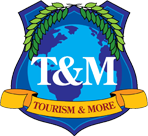New Ideas for Marketing Your Brand
March 2013
One of the current buzzwords in tourism marketing is branding. its relationship to social media and to marketing is something often discusses at tourism seminars and conferences. Branding is often a lot more complicated than what most people realize. A tourism brand must not only stand for something but it must also be clear that the brand does not stand for something else. For example, in our community we do not tolerate poor service. In this month’s Tourism Tidbits we discuss branding, social media and ways to stay ahead of the pack.
It is always the customer who has the final say as to whether the brand fits of not. Good marketing can do a great deal, but in the end, it is the customer who decides if the branding works or does not work. Good branding always has a connection to reality. The brand and the brand’s reality have to be in sync, if not the brand will fail.
Do your research before you brand. There are a number of parts to analytical research. First and foremost know who is your customer. No tourism entity can be everything to every one. Know the demographic, sociological and economic profile of the people who you hope to attract. Then analyze what you have to offer. Be sure that you understand what level of customer service you can offer, what your product is, and why anyone would want to visit your locale. Finally never forget that tourism is a business. Ask yourself what are your current and future costs of doing business, what challenges lie ahead, how will you national, regional and the world economy impact your tourism product and its brand.
Take the time not only to analyze your data but also to connect the dots. Data are only as good as the data’s integration into a meaningful pattern. In the end you want to know if you are increasing or decreasing your potential market share. What are you doing right or wrong? Are your customers spending more or less money on your tourism product? Do you integrate your IT, business and financial reports into a single report that is both readable and useful? Do the various branches of your tourism industry communicate with each other and do they use the same terminology and measurement units? Data that are not interchangeable within a single tourism entity be that an attraction or a tourism office or CVB are essentially worthless.
Encourage innovation and out of the box thinking. Real innovative people are rare and often feel stifled. In fact most nation’s educational systems are organized in such a way as to keep creativity to a minimum. Yet tourism and tourism branding depend on innovation, creativity and out of the box thinking. Remember that people who are innovative rarely think in a linear fashion. Make sure that these people understand your data, and your vision and then get out of their way. Do not expect them to follow company rules (but do insist that they do not break the law). Instead allow them to interact with people from across the organization. Rarely do innovative people stay within their rank. Instead they find ideas from both mining data and from co-worker interactions on both a formal and informal basis.
Connect your branding to your pricing strategy. If your tourism product is geared to a specific part of the tourism economic spectrum then make sure that the branding matches the social profile of the people whom you wish to attract. In some tourism products, such as luxury hotels, discounts may harm the brand more than they increase revenue. Develop pricing strategies that integrate data with the subconscious motivations that lay below the surface of your brand.
Create habit-forming behaviors (such a repeat visitations) and then develop the brand around the customer’s habits. That means that these are the places we go to by default or we cannot think of someplace else. In tourism the best way to form repeat visitation (habits) is through personalized service. In an industry that promises hospitality but all too often treats its customers more like cattle than like honored guests, add the personal touch. Teach personnel to ask when people will be returning and use social networks to stay in touch even when you are not selling anything! To know how well you are forming visitation habits plot how often a visitor comes to your destination (occurrence) and how much the customer believes s/he is getting from the tourism experience (his or her perceived utility. Where these two lines cross measures the level of visitation loyalty (the habit of returning).
Determine not only what your brand is but also what it is not. The first part of this statement is well known to marketers, but we also forget to state in a positive way what we are not. If we offer the best in customer service then we do not tolerate poor service. If you are a center that pushes athletic activities then be sure to make it clear that your destination is not a place to be a couch potato. Remember no tourism destination can be all things to all people. In creating a brand, avoid clichés, do not copy the other guide (copying your competition only flatters the competition and establishes you as the second best), base your branding on serious research rather than on what well-intentioned people tell you to be.



